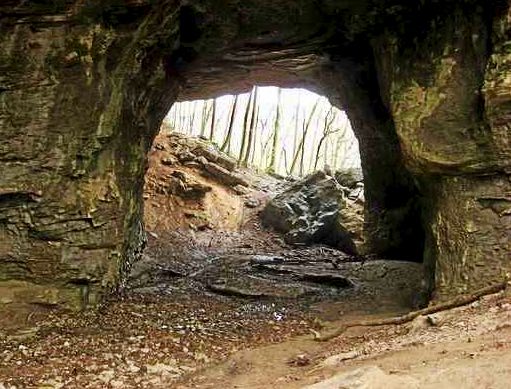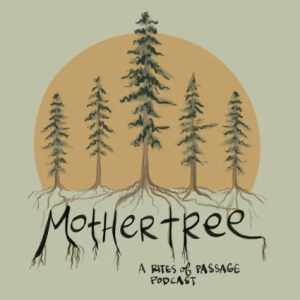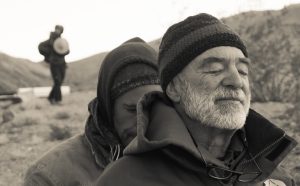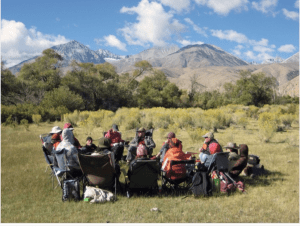
Die Before You Die
The Gifts of the Death Lodge
I was grateful that timing worked out for me to be in our little desert home in the Owens Valley for the pivotal weekend of the expected chemo induced hair loss, and away from the buzz of the Bay Area, where I was going through breast cancer treatment. “Fourteen days after your first infusion,” my oncologist in Palo Alto had told me, “you can count on it!” My hair roots had begun to hurt a few days earlier, but it was all still there, the morning of day fourteen. Who knows, I thought, maybe – just maybe, it won’t happen to me.
But later that day, brushing my hand absentmindedly over my head while journaling on the patio, a tuft of blond hair silently floated by, touching down on the lawn for a brief moment, before the autumn breeze picked it up and chased it down the driveway. Damn!
Like most things, we can’t really imagine them until they actually happen to us. And we don’t really know what we are going to do with them until we are face to face with their physical reality. For me, that afternoon, as I was watching the first bushel of hair tumbling toward the street, it suddenly became clear that I would entrust my hair to this valley, this patch of earth that was sacred ground to me. I was going to give this loss meaning, rather than just enduring it. I would give my hair to the earth as a gift, rather than just having treatment take it from me.
In the story of the Popol Vuh, an ancient Mayan creation myth, a pair of twin heroes is summoned to fight the lords of death. The twins are courageous and smart, and manage to defy death longer than anyone else who had been summoned before them. But in the end, after various rounds of battle, the lords of death create their final and perfect trap in the form of an all-consuming fire. The twins, realizing that they can not escape this time, do the unthinkable: they simply turn to face the engulfing flames, laughing, and stating that they had known all along it would come to this. Instead of begging for their lives, they jump straight into the fire, dying of their own accord and thus robbing the lords of death of their victory. And to everyone’s surprise, they attain eternal life, and become gods. Or so the story goes.
Whether you believe this tale or not, it is true that in every dying we are freed, and born anew. There are times where turning into the skid is essential. When we cannot hang on to what no longer is ours. When we cannot hang on to what no longer is true. There are times, when we are asked to face our greatest fears, and somehow miraculously find the courage to die to those fears, instead of dying from them. For me, this weekend was one of those times.
More hair was greeting me on my pillow the next morning, and urging me to get up and outside, and onto the trails behind our little town, alongside the mountain peaks of the Sierra Nevada. The time was now, ready or not, my hair wasn’t going to wait. I stopped by one of the great old cottonwood trees that line the path, to make an offering and follow my nose, vulnerable, curious, and a bit tentative.
Every threshold crossing is unique but the blueprint of sacred time on the land is always the same. When we go alone and enter intentional time in the natural world, we return to a belonging that is so much older than our linear minds and we are found by something so much greater than our civilized sense of self. In nature, we can’t help but remember that life is cyclical. Here, birth and death are not separate, they live side by side, feeding one another. On the land things are what they are, and they invite us to be who we are, without make up or judgment. There is space to be, in any way that we are, in the whole spectrum of our human experience. Nothing is too much, and nothing too little. We are as welcome to bring our rage, our tears, or our confusion, as we are to bring our elation or a simple quiet happiness.
In response, we are asked only one thing: to suspend disbelief. To remember that we can ask questions into the wind and receive messages from the hoot of an owl, a rock that we trip over or a memory triggered from deep within our childhood soul. We don’t have to learn this way. We are born with it. All we have to do is scrape the layers off that are crusted upon that intelligence and remember what we have always known.
Crouching in the sparse shade of some willow by a creek crossing, a perfectly round and plum dandelion seed appeared in my view. Sailing through the morning air, it hovered for a timeless moment in perfect stillness above the running water right in front of me, before getting pulled down into the stream hard and fast, sweeping away with the current, gone in a flash, leaving me dazed. Where is it headed, I wondered? What was going to become of it? Would it grab a hold somewhere downstream? And give birth to a new plant? Would it be pulled down deep and become fish food? Or become part of a bird’s nest? All of us, plants, critters and humans alike, I realized, are asked to muster the courage to show up as fully as we can, in the dying to what was, and in the birthing of the unknown that is our future.
Seeing my hair fall made having cancer undeniably real. No longer would I carry the discrepancy of being sick inside my private self. After this weekend, I would be visibly ‘unwell.’ I would be subject to public scrutiny, and projection, naked and vulnerable. One of the women people stare at in the grocery store, no matter how hard we try to act casual, pulling our hats and caps down low over our bare heads. What was I dying to on this weekend? What needed to fall away along with my hair so that I could sail down the river into the unknown of my future with some dignity and grace? I decided to do a death lodge ceremony, using an age old practice tool that is part of my work in marking life transitions.
Death has a bad ring in the western world of today. It is kept behind closed doors and we are taught to shut it out of our consciousness to the best of our abilities. Our associations with it are dark, and most often violent. To most of us, death is terrifying. It smells of defeat and loss rather than transformation or homecoming. We try to fend it off as long as we can through medical intervention, going as far as keeping vacant bodies alive with machines, sometimes against their expressed will. We bury our dead in lead lined caskets to protect our dead corpse from decay (and deny the earth the nourishment from our bones) for hundreds of years to come. Yet, with the denial of physical death also comes the loss of the emotional depth evoked by it, the repression of qualities like grief, surrender, and letting go that are so vital in birthing us anew, again and again.
It wasn’t always like this. Indigenous cultures of all origins had distinct dying practices that worked with the particular archetypes, the landscape and the myths of the lineage to help ready the individual for life’s greatest transition. To die “a good death,” to make it good with one’s people, to be at peace in the final hours has always been essential, not just for oneself but for the health of the communities. Which is why many of the old lineages had different types of death lodge ceremonies.
Back then, those who were preparing for their final crossing would maybe be staying in a separate space, a little ways away from the main village. Here, they would be cared for and could be visited by the family and community members that they were leaving behind, as well as by the spirits of their ancestors. The death lodge was a sacred space in between the worlds, a cocoon that held the transformative process of dying, a place where relationships were healed, karmic bonds were revealed, examined and, as much as possible, surrendered before physical death would occur.
But the practice of the death lodge doesn’t have to wait until our final days. In fact, it may be best if it not. There are plenty of smaller or symbolic deaths in our life we can practice with: a divorce or break-up of a love relationship, the surrender of a dream, the loss of a loved one, or a cancer diagnosis. The modern death lodge ceremony that is part of my work, is an opportunity to face our mortality, to work with loss, and forgiveness, to make it good with our lives, to find peace and acceptance so we can let go of, and die to what has been.
I spent hours by a special place at the river in ceremony. With every strand of hair that I set sailing down the stream, I bade the life I was leaving behind goodbye. Feeling my hair give made turning into my dying very real. There was so much grief, anger, and fear. It took every ounce of me to turn into my ‘unfinished business’. Memories of my 46 years on this earth kept coming. Grief, regret, and stories from the past that were holding me back. Beliefs that had led me astray, and pain that I had held onto for a long time. Loved ones ‘showed up’ in my lodge as I thought of them, some expected and others not, and not-so-loved ones, like my ex-husband, came as well. Words floated up from the water and were deeply heard, tears were shed, my heart cracked open and words that I didn’t know I had were released into the flowing stream. Time stood still. The process of ‘making it good’, or as good as I could on that day simply was. When I stumbled back up the river bank hours later, I was mostly bald, with nothing but some uneven spots of fuzz left on my bare head. I was exhausted, and called my husband to pick me up and take me home.
But I was also ready. I was feeling at peace with myself and my loved ones, and I was ready to journey into the unknown abyss of the coming months of baldness and cancer treatment. I somehow had received a glimpse of what I would later call the gift greater than anything that cancer and treatment would take from me. Dying to life as I knew it then, something in me had connected with my true essence, had re-member-ed my whole self, the core at the center of this being – and exhausted as I was, I felt a freedom and a lightness that would guide me forward in ways I couldn’t even imagine at the time.
Those of us diagnosed with a serious, life threatening disease, are thrown abruptly and without our consent into the inquiry of our potential dying. However we individually cope with the news, our psyche crosses a threshold when we are diagnosed. After absorbing the initial shock, it is doing the work of the death lodge, whether we know it or not. Our viewpoint shifts, as a deep internal inquiry begins. Money, material goods and social standing seem to momentarily lose all meaning. The mundane world and petty concerns of all sorts simply shrink before our eyes.
Instead, what comes forward is the “long view” of our life, inner core values like the desire to be known and loved for the unique being that we are, the longing to live in right relationship, to leave a good legacy for our children. Our lives flash by in memory and we may feel the simple yearning to have left an impact, to be remembered by among our people. If we can mark this moment, if we can jump into the fire of our fears and face our dying, like the twins did in the ancient tale, this “remembering” of ourselves can also be a birthing into all that is yet to be. It can propel us forward, to find the one life that is ours to live.
Michael Meade says what becomes revealed at the end of a life fully lived, is the story that was trying to surface all along. The boon of cancer and other life threatening ‘curveballs’ that might be hurtling our way is that we don’t have to wait until the end. The gift that comes with the unequivocal hardship of an early brush with death is the opportunity of cleaning one’s slate early. Call it an early-bird special. If we heed this invitation, if we are brave enough to face our dying, we can’t help but come ever more fully alive, during the rest of our time on this sweet earth, no matter if for weeks, months or, blessed be, even decades to come.
I’m not sure if any of us will attain eternal life, like the twins in the story. But I do know that it is possible to live fully in every moment. Maybe it’s up to every one of us to stretch those moments into eternity.
Note: References to the death lodge are in the lineage of Steven and Meredith Little who founded the School of Lost Borders where I do most of my work today. (More information upon request)
Share This
Related posts




